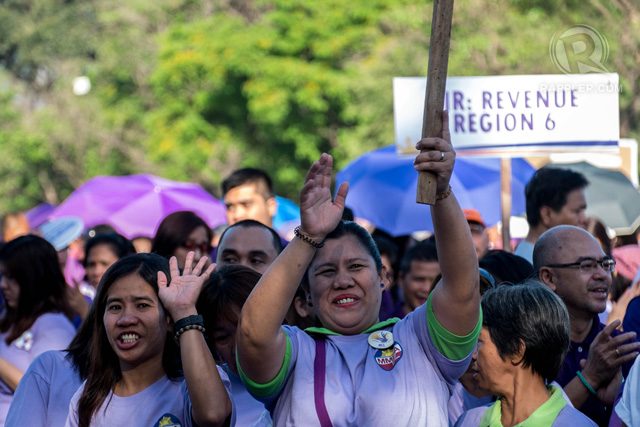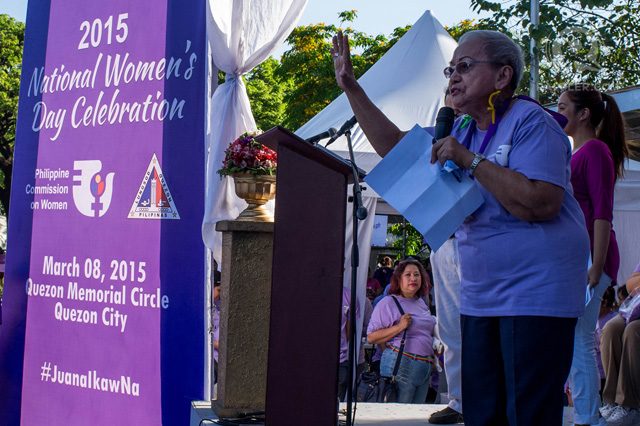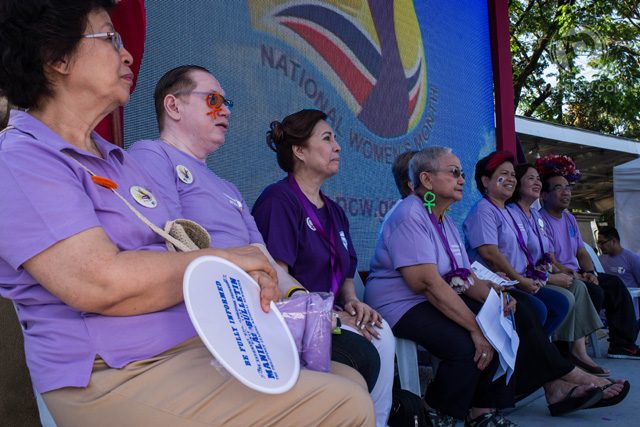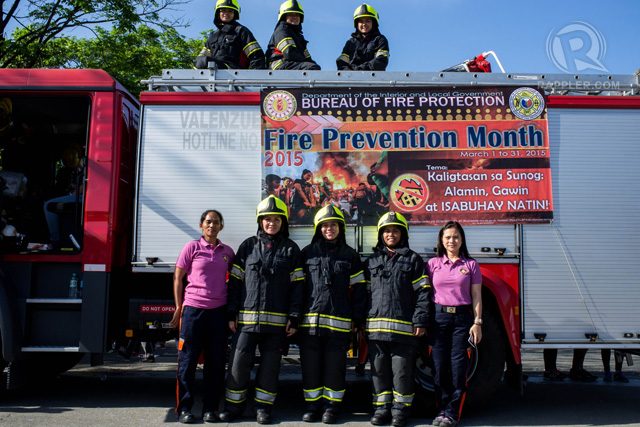SUMMARY
This is AI generated summarization, which may have errors. For context, always refer to the full article.

MANILA, Philippines – “[What] we want is representation. We (women) comprise almost 50% of the country’s population; therefore we should be part of the leadership, the power and decision making.”
This was the statement made by Philippine Commission on Women (PCW) Chairperson Remedios Ignacio-Rikken at a program celebrating the International Women’s Month at the Quezon Memorial Circle on Sunday, March 8.
As the government’s lead agency for women’s advocacy and empowerment, PCW is organizing activities to celebrate and promote Women’s Rights for the month of March, as mandated by former president Cory Aquino’s proclamation no. 227, issued on February 27, 1988.
Proclamation 227 highlighted the historical contributions Filipino women of every class, religion and ethnic background have made to the growth and strength of the nation.
Guided with this year’s theme; “Juana, desisyon mo ay mahalaga sa kinabukasan ng bawat isa, Ikaw na!,” (Juana, your decision is important to the future of everyone) the government is encouraging women in all sectors of the society to take an active leadership role in determining our collective future.
“In barangays, municipalities, cities, the Congress, the Senate and in all branches and departments of the government, women must contribute in governance and management, [and] be part of every judgment and ruling in the civil societ,” Rikken said.
“It is about time that women lead like how mothers take good care of their children. The world will become a better place if both men and women are being heard.” Rikken added.

Women make up half of the Philippines’ population, or more than 51 million Filipinos. Despite this, in the Senate, there are only six (6) women senators out of the 24 seats. In the House of Representatives, there are 79 women lawmakers out of the 289 congressional seats.
But what women lack in numbers, they make up in the strength of their contributions.
Women occupy 56 key positions in the executive, legislative and judiciary including the Supreme Court Chief Justice, the Ombudsman, the Secretaries of the Department of Justice; Social Welfare and Development; Labor and Employment; the Chairperson of the Commission of Human Rights; the Commission on Higher Education; the Commission on Filipinos Overseas; the Presidential Adviser on the Peace Process; the head of the Government Peace Panel; and the Bureau of Internal Revenue, among others.
At home
The government says it is doing its part to empower women at all levels of society.
Social Welfare Secretary Dinky Soliman told Rappler that the government’s main focus is to give the women of every household the control and share the authority inside the family, especially for poor women through its Pantawid Pamilya Pilipino Program (4Ps).
“The DSWD is one of the national government agencies responsible for ensuring that the vulnerability of women is protected, and if they were victimized, they should be rehabilitated; therefore empowering them should be the proactive work of the government. This is being done in several programs such as the 4Ps where 95% of card holders, or the beneficiaries, are women,” said Soliman.

“We want women to become prevailing in terms of headship; we encourage them to be part of and to be active in the political and social life of the community because decisions made by legislators and authorities have impact in their lives.” Soliman added.
Mandated by law
The Philippines is widely recognized for having been able to close the gap in terms of gender equality in the workplace. According to the Global Gender Gap Report for 2014, the Philippines ranks within the top 10 countries with low gender inequality.
It helps that there are specific laws, like Republic Act 9710 or the Magna Carta for Women, that seek to eliminate discrimination against women by recognizing, protecting, fulfilling and promoting the rights of Filipino women. This includes the non-discrimination in employment in the fields of military, police and other several services.
One such example is the Bureau of Fire Protection, which now employs women as frontline firefighters.

“Lady Members of the BFP can operate trucks, perform the functions in a search and rescue and execute jobs that a male firefighter could do; therefore we can have an all female fire truck crew in the future.” said SFO3 Lonel Lopez of Quezon City Fire District.
“Gender equality is still an issue but we must not stop struggling and proving that women are vital elements of the society and in decision-making.” Lopez added.
– Rappler.com
Add a comment
How does this make you feel?
There are no comments yet. Add your comment to start the conversation.